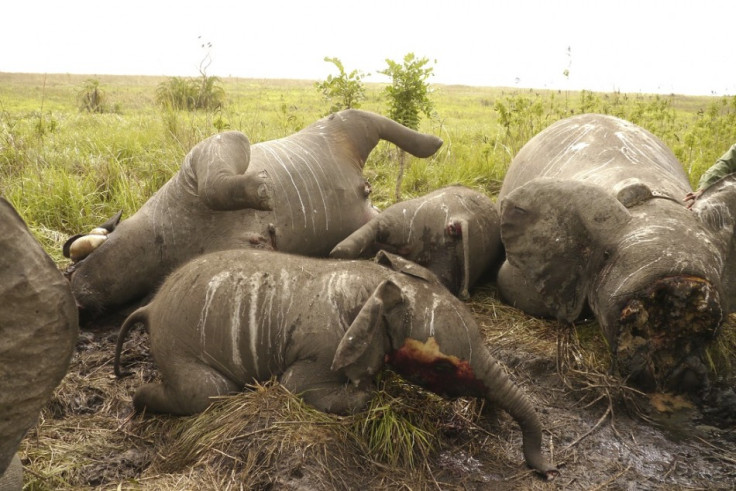IUCN Botswana Conference: 100,000 African Elephants to be Slaughtered in Next 10 Years

One hundred thousand African elephants will be slaughtered over the next 10 years if current rates of poaching continue, experts have said.
Delegates have gathered in Botswana to discuss the plight of the African Elephant for a meeting hosted by the Government of Botswana and the International Union for Conservation of Nature.
Analysis of the latest poaching data from the Monitoring the Illegal Killing of Elephants programme shows that 15,000 African elephants were killed last year, but experts say the true figure is around 22,000. A year earlier, it is estimated 25,000 elephants were killed illegally.
It is estimated that the current African Elephant population is around 500,000. In the 10 years before the 1990 international ban on the trade of ivory, it is thought the population more than halved from 1.3 million to 600,000.
John E Scanlon, secretary general of the Convention on International Trade in Endangered Species of Wild Fauna and Flora, said: "With an estimated 22,000 African Elephants illegally killed in 2012, we continue to face a critical situation. Current elephant poaching in Africa remains far too high, and could soon lead to local extinctions if the present killing rates continue.

"The situation is particularly acute in Central Africa-where the estimated poaching rate is twice the continental average."
Experts say there are high poaching levels in all the sub-regions of Africa as a result of poverty and weak governance, coupled with rising demand for ivory. Data shows illicit trade in ivory rose in 2011 to the highest levels for at least 16 years and continued at a high level last year.
It is thought even higher levels of illegal trade could be reached this year - so far 18 seizures involving at least 500kg of ivory have been confiscated.
Tom Millike, an ivory trade expert with wildlife organisation Traffic, said: "From 2000 through 2013, the number of large-scale ivory movements has steadily grown in terms of the number of such shipments and the quantity of ivory illegally traded. 2013 already represents a 20% increase over the previous peak year in 2011; we're hugely concerned."

The meeting in Botswana is expected to bring commitments from delegates to halt the trade of ivory and stop illegal killings.
Since 2009, trade routes shifted from West and Central Africa seaports to East Africa, with Tanzania and Kenya as the primary exit points for illicit ivory leaving the continent.
Scanlon said: "In the face of the overall bleak picture we must remain diligent, but we are seeing for the first time in years some encouraging signs the poaching situation may be stabilising.
"This gives us hope that if we continue to seriously step up enforcement and public awareness efforts across the entire illegal trade chain, support sustainable livelihoods for rural communities affected and remain ever vigilant, we can put the disturbing trends of recent years into reverse."
© Copyright IBTimes 2025. All rights reserved.




















